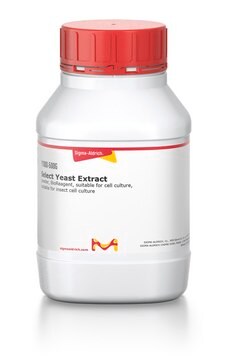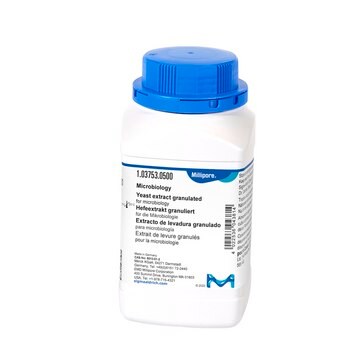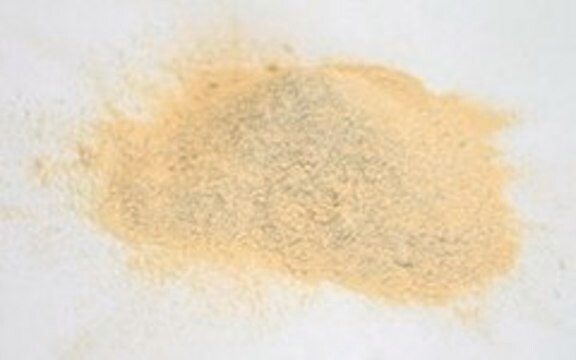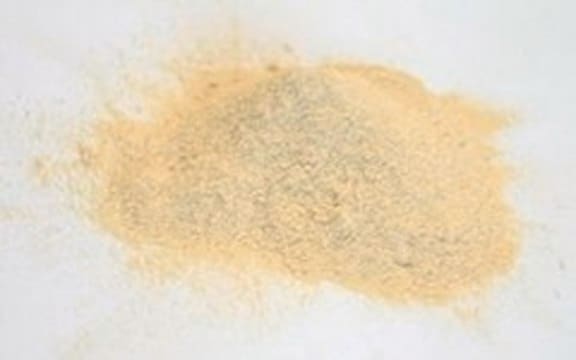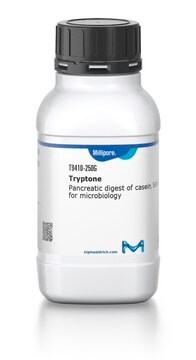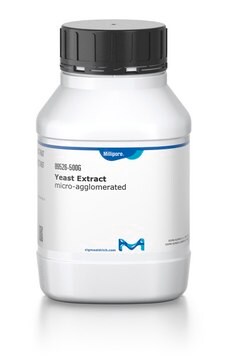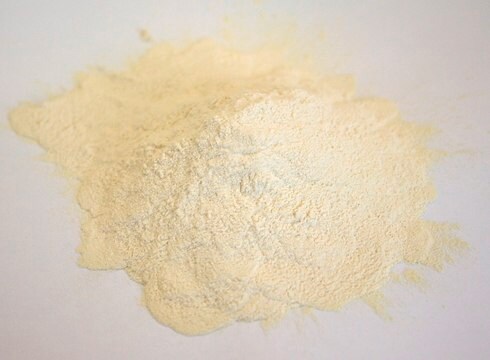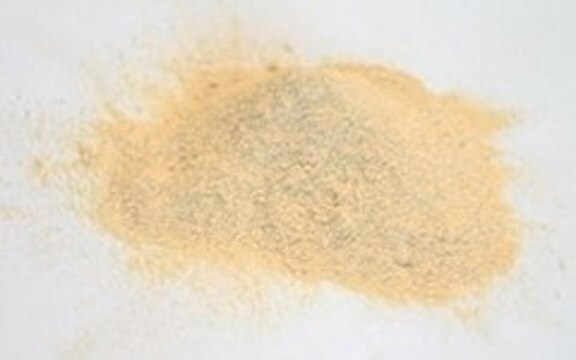Y0875
Select Yeast Extract
for use in microbial growth medium
About This Item
Polecane produkty
klasa czystości
for molecular biology
Poziom jakości
sterylność
non-sterile
Formularz
powder
metody
microbiological culture: suitable
pH
6.5-7.5(10% solution)
rozpuszczalność
H2O: 100 mg/mL, clear to slightly hazy, yellow to brownish-yellow
Zastosowanie
microbiology
temp. przechowywania
room temp
przydatność
nonselective for Escherichia coli
nonselective for coliforms
ciąg SMILES
OC(=O)CC1c2c3c(ccc2c4c1cccc4)cccc3
InChI
1S/C19H14O2/c20-18(21)11-17-15-8-4-3-7-14(15)16-10-9-12-5-1-2-6-13(12)19(16)17/h1-10,17H,11H2,(H,20,21)
Klucz InChI
GQNBDGXKDJSVGQ-UHFFFAOYSA-N
Szukasz podobnych produktów? Odwiedź Przewodnik dotyczący porównywania produktów
Opis ogólny
Yeast extract is used in all solid media, on which stock cultures are maintained, due to its ability in promoting growth of most bacterial contaminants, thereby making them visible to identify. Yeast extract does not enhance the growth of wild-type cells but essential for auxotrophic mutants.
Zastosowanie
- as a supplement in the minimal sporulating medium (MSL) for the secretory production of human tumor necrosis factor-α (TNFα) using the carboxypeptidase Y (Cpy) signal peptide.
- in the isolation of halophilic archaea.
- as a component of microbial growth medium for cultivation of marine bacterial strain Zobellia uliginosa.
Suitable for use as nutritional source in microbial media.
Inne uwagi
produkt powiązany
Kod klasy składowania
11 - Combustible Solids
Klasa zagrożenia wodnego (WGK)
WGK 3
Temperatura zapłonu (°F)
Not applicable
Temperatura zapłonu (°C)
Not applicable
Środki ochrony indywidualnej
Eyeshields, Gloves, type N95 (US)
Wybierz jedną z najnowszych wersji:
Masz już ten produkt?
Dokumenty związane z niedawno zakupionymi produktami zostały zamieszczone w Bibliotece dokumentów.
Klienci oglądali również te produkty
Protokoły
General protocols for growth of competent cells in microbial medium.
Hodowla bakterii E. coli w skali od małych kultur do fermentacji. Uwzględniono protokoły inicjowania kultury starterowej, komórek zawiesinowych, monokultury i posiewu bakteriofaga M13.
Nasz zespół naukowców ma doświadczenie we wszystkich obszarach badań, w tym w naukach przyrodniczych, materiałoznawstwie, syntezie chemicznej, chromatografii, analityce i wielu innych dziedzinach.
Skontaktuj się z zespołem ds. pomocy technicznej
